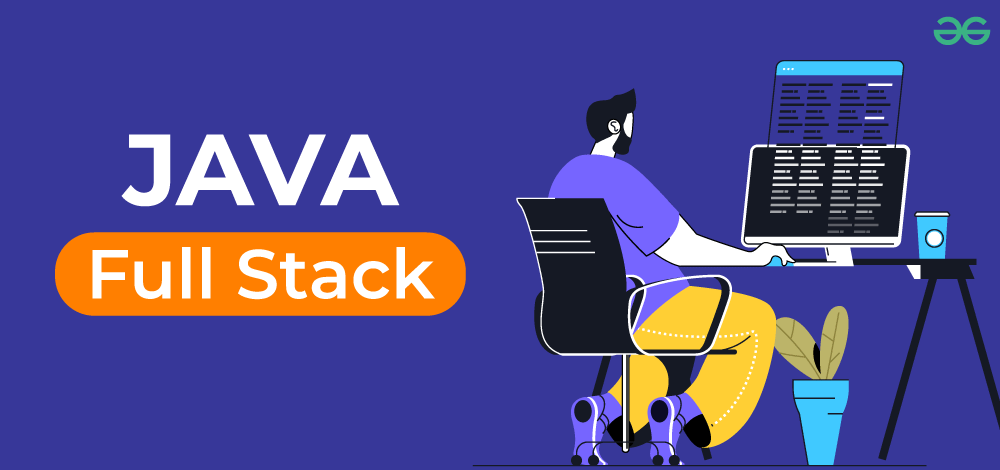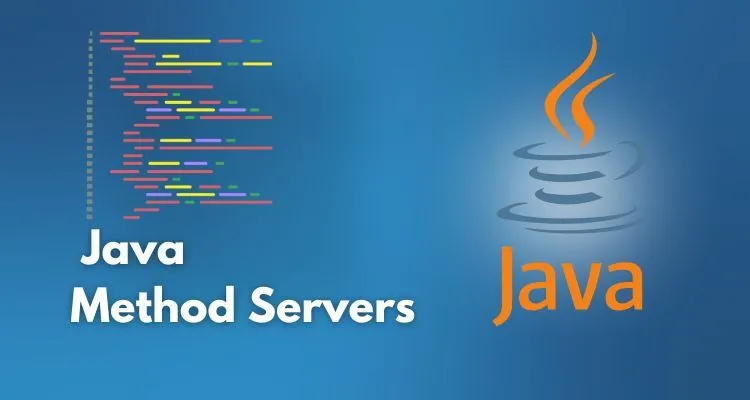Working as a Java full stack developer is a challenging but rewarding journey. In the first few years, developers usually focus on building a solid foundation in both front-end and back-end technologies. However, as they gain experience, their roles, responsibilities, and expertise evolve substantially. After 5 years as a Java full stack developer, a developer’s skill set, career opportunities, and day-to-day work may look very different from their experience as a beginner. This blog post explores the transformation that occurs after 5 years Java full stack development, highlighting key areas such as skill enhancement, adapting to new technologies, role evolution, career development, and future trends.
Skill Growth in 5 years java full stack Development
Mastering Core Java and Advanced Concepts
During the early stage of their careers, Java full stack developers spend a lot of time mastering core Java fundamentals such as object-oriented programming, exception handling, multithreading, and collections. By the end of 5 years Java full stack development, their knowledge expands to include advanced concepts such as concurrency, functional programming with lambdas and streams, and the Java memory model.

With experience, developers gain a deeper understanding of how to optimize performance, manage memory, and write more efficient, scalable code. They also become adept at using Java’s advanced features, such as Java Development Kit (JDK) enhancements, new APIs, and modular programming introduced in recent versions of the language. This growth in skills is a hallmark of the first 5 years Java full stack development.
Development of Front-End Skills
Initially, Java full stack developers may have a basic understanding of front-end technologies such as HTML, CSS, and JavaScript. As they progress through their first 5 years Java full stack development, they delve into modern frameworks like Angular, React or Vue.js. These frameworks allow developers to build rich, dynamic user interfaces and provide advanced capabilities like state management, component-based architecture and client-side routing.
By the five-year mark, developers are typically proficient at building complex, responsive front-end applications. They understand how to optimize front-end performance, effectively manage application state and apply best practices in front-end development. They are also able to make informed decisions on which front-end technology stack to use based on project requirements and team expertise. These skills are developed during the 5 years Java full stack development.
Backend proficiency with modern frameworks
Backend development is the backbone of any full stack developer’s skill set. For Java developers, this often means starting with foundational frameworks like Spring and Hibernate. Over time, they gain a full understanding of these tools and learn to leverage their advanced features, such as Spring Boot for rapid development and Hibernate for efficient data persistence. These capabilities typically emerge in 5 years Java full stack development.
After 5 years Java full stack, developers can design and implement complex RESTful services, handle large-scale database interactions, and ensure the scalability and reliability of backend systems. They are well versed in microservices architecture, asynchronous programming, and integrating various backend services. This enables them to build robust, high-performance applications that can handle significant traffic and data loads.
Integrating full stack development with automation
As developers mature in their roles, they begin to see the importance of automation in full stack development. They become familiar with tools and practices such as continuous integration and continuous deployment (CI/CD), automated testing, and infrastructure as code (IaC). This helps streamline the development process, reduce time-to-market for new features, and maintain high code quality. Mastery of these practices is often achieved in 5 years Java full stack Development.

By integrating automation into their workflow, developers ensure that their applications are not only functional, but also maintainable and scalable. They learn to use tools like Jenkins, Docker, and Kubernetes to automate deployment pipelines, manage application containers, and orchestrate microservices. This holistic understanding of development and deployment is a key milestone after 5 years Java full stack Development.
Keeping up with evolving technologies
Adopting new tools and libraries
Technology is always changing, and it’s vital for any developer to stay updated. Over the years, Java full stack developers have needed to adopt new tools and libraries that improve efficiency, security, and performance. This includes updates to Java itself, such as new features in the latest JDK versions, as well as advancements in front-end frameworks and back-end libraries. Keeping up with these changes is part of the 5-year journey in Java full stack development.
Developers need to be proactive in learning and experimenting with these new tools. This could mean attending workshops, participating in online courses, or contributing to open-source projects. By staying ahead of the times, they can make informed decisions about which technologies to adopt in their projects, ensuring they stay competitive in the job market. This proactive approach has been in place for over 5 years Java full stack development.
Incorporating cloud services and DevOps practices
With the growing use of cloud computing, modern applications are often designed to be cloud-native. After 5 years Java full stack, developers typically gain experience with cloud platforms such as AWS, Azure or Google Cloud. They learn how to deploy applications on these platforms, manage resources and ensure scalability and reliability.
DevOps practices are also becoming essential for full stack developers. Understanding how to integrate these practices into the development workflow can greatly increase productivity and reduce deployment times. Knowledge of tools such as Jenkins for CI/CD, Docker for containerization and Kubernetes for orchestration is now a vital skill set for those who have completed 5 years Java full stack development.
Shifts to microservices architecture
As applications grow in complexity, many organizations move from monolithic architectures to microservices. This shift requires significant changes in the way developers design and build applications. After 5 years Java full stack, many developers become proficient at designing microservices-based systems, understanding the principles of service decomposition, and managing inter-service communication.
This architectural style allows for greater scalability, maintainability, and flexibility. Developers learn to deal with challenges such as data consistency, service discovery, and fault tolerance. Mastering these concepts enables them to create applications that can easily scale and adapt according to changing business requirements. This is a vital skill for developers who have spent 5 years Java full stack development.
Changing roles and responsibilities after 5 years
From Developer to System Architect
After gaining enough experience, many Java Full Stack developers find themselves shifting from purely technical roles to more design-oriented positions. They become involved in the architectural decisions of projects, defining the technology stack, and creating blueprints for system design. Their experience of over 5 years Java full stack development allows them to anticipate potential problems and design systems that are scalable, maintainable, and performant.
This role also involves a comprehensive understanding of non-functional requirements such as security, performance, and scalability. As architects, developers need to consider the long-term implications of their design choices and how they align with business goals and user needs. This shift is a natural progression after 5 years Java full stack development.
Taking on leadership and advisory roles
With experience also comes the responsibility to guide others. Senior developers often take on advisory roles, helping junior developers understand the complexities of full stack development. This can include code reviews, pair programming, and sharing knowledge through documentation and workshops. These advisory skills are typically developed over 5 years Java full stack development.
Leadership roles can also extend to project management, where developers are responsible for coordinating with other teams, managing project timelines, and ensuring that the development team delivers high-quality software on time. These roles require a combination of technical expertise and soft skills such as communication, empathy, and conflict resolution. These competencies are often honed over 5 years Java full stack development.
Greater involvement in project management
As they gain experience, Java full stack developers often become more involved in project management tasks. This can include attending project planning meetings, estimating development time, and coordinating with stakeholders to ensure the project is moving in the right direction. They also play a key role in translating business requirements into technical specifications, ensuring the final product meets the client’s expectations. This extensive involvement is common after 5 years Java full stack development.
This involvement in project management requires a good understanding of Agile methodologies, such as Scrum or Kanban. Developers must be able to work effectively in cross-functional teams, clearly communicate progress and blockers, and adapt to changing requirements. These skills are often acquired during 5 years Java full stack development.
Career Growth and Opportunities Beyond 5 Years
Progression into Senior and Lead Roles
After 5 years java full stack development, many developers are ready to take on senior roles such as senior developer, technical lead, or even engineering manager. These positions come with increased responsibilities, including overseeing the technical direction of projects, mentoring junior developers, and ensuring that the development process is aligned with business goals.
In these roles, developers are expected to make strategic decisions about technology adoption, architectural patterns, and development practices. They must also ensure that the team is following best practices in coding, testing, and deployment. These responsibilities are typically taken on after 5 years java full stack development.
Exploring Expertise in Emerging Domains
With a solid foundation in full stack development, some developers choose to specialize in specific areas. For example, they may move into machine learning, big data, or cybersecurity. Specialization can open up new career paths and allow developers to work on cutting-edge projects. This decision often arises after 5 years java full stack development.
Specialization often requires additional training and experience, but they can lead to roles such as data engineer, AI specialist, or security consultant. These roles are in high demand and can provide exciting challenges and opportunities for growth. Moving down these paths typically comes after gaining significant experience, such as 5 years java full stack development.
Opportunities in Freelancing and Consultancy
After gaining significant experience, some developers choose to transition into freelancing or consultancy. These career paths offer more flexibility and the opportunity to work on a variety of projects. Experienced Java full stack developers are often in high demand as freelancers, as they can handle complex projects independently and bring a wealth of knowledge. This option becomes viable after 5 years java full stack development.
Consultancy roles allow developers to advise organizations on technology strategy, system architecture, and best practices. These roles require a deep understanding of the industry and strong communication skills, as consultants often work directly with clients to solve business problems through technology. This career change is common after 5 years java full stack development.
Challenges Faced After 5 years java full stack Development
Keeping pace with rapid technological advancements
The technology landscape is constantly evolving, and staying updated can be a challenge even for experienced developers. New frameworks, tools, and best practices emerge regularly, and developers need to constantly learn to stay relevant in this field. This is especially true after 5 years of experience in Java full stack development.
One way to overcome this challenge is to form a habit of lifelong learning. This can include attending conferences, participating in online courses, and reading tech blogs. Staying active in the developer community, contributing to open-source projects, and networking with other professionals can also provide valuable insight into industry trends. These habits are often formed over 5 years java full stack development.
Balancing coding and management duties
As developers take on more leadership responsibilities, they often find it challenging to balance coding with management tasks. Project management, team coordination, and stakeholder communication can take up a significant amount of time, leaving less room for hands-on coding. Striking this balance becomes critical after 5 5 years java full stack development.

To manage this balance, developers need to effectively delegate work, prioritize their tasks, and set clear boundaries. Despite the increase in management duties, it is important to stay involved with the technical aspects of the job. This helps maintain credibility and ensures they can continue to provide technical guidance to the team. Achieving this balance is a critical skill developed over 5 years java full stack development.
Maintaining a healthy work-life balance
With increased responsibilities, it can become more difficult to maintain a healthy work-life balance. Long hours, tight deadlines, and the pressure to stay updated with new technologies can lead to burnout. This is a common problem after 5 years java full stack development.
To avoid burnout, developers should prioritize self-care and set boundaries between work and personal life. Taking regular breaks, pursuing hobbies, and spending time with family and friends can help recharge and maintain productivity in the long run. Managing this balance is a crucial skill for those who have 5 years of experience in Java full stack development.
Also Read
Future Trends in Java Full Stack Development
The Shift Towards Serverless Computing
Serverless computing is becoming increasingly popular for its ability to reduce infrastructure management overhead and scale applications seamlessly. Full stack developers need to understand how to build and deploy applications using serverless platforms such as AWS Lambda, Azure Functions, or Google Cloud Functions. This knowledge becomes more relevant after 5 years java full stack development.
This trend is likely to continue as organizations look for ways to optimize costs and improve scalability. Learning serverless architecture will enable developers to create applications that can automatically scale with demand without the need for manual server management. This trend is expected to grow over the next few years and will be important for those who have 5 years of experience in Java full stack development.
Integrating Artificial Intelligence and Machine Learning
Artificial intelligence (AI) and machine learning (ML) are being integrated into a growing number of applications to provide enhanced functionality and user experience. Java full stack developers can benefit from understanding how to integrate AI/ML models into their applications using frameworks such as TensorFlow, PyTorch or Java libraries such as Deeplearning4j. This knowledge becomes especially valuable after 5 years java full stack development.
This integration can lead to new opportunities in areas such as data analysis, predictive modeling and natural language processing. Developers who invest in learning these techniques will be well-positioned to take on complex projects that leverage AI/ML. This is an emerging trend that will shape the future of those with 5 years of experience in Java Full Stack Development.
Strengthening Security and Compliance Measures
As data breaches and cyber threats become more prevalent, security and compliance are becoming a top priority for organizations. Full stack developers must be well versed in secure coding practices, encryption, and compliance requirements such as GDPR or CCPA. This focus on security is especially important after 5 years of experience in Java Full Stack Development.
Understanding security best practices and integrating them into the development process is crucial to creating applications that protect user data and comply with legal requirements. This includes implementing secure authentication mechanisms, protecting against common vulnerabilities, and conducting regular security audits. These skills are vital for developers with 5 years of experience in Java Full Stack Development.
Frequently Asked Questions About 5 Years as a Java Full Stack Developer
Question 1: What skills should I have after 5 years as a Java Full Stack Developer?
Answer 1: You should have strong expertise in core Java, proficiency in front-end frameworks like Angular or React, deep understanding of backend frameworks like Spring, experience with cloud platforms, and familiarity with microservices architecture. These skills are typically acquired over 5 years java full stack development.
Question 2: How does a Java full stack developer role change after 5 years?
Answer 2: The role evolves from primarily coding to more design and architecture-related responsibilities. There
is also a shift toward leadership, mentorship, and project management roles. These changes are common after 5 years java full stack development.
Question 3: What challenges do experienced Java full stack developers face?
Answer 3: Challenges include keeping up with new technologies, balancing coding with management duties, and maintaining a healthy work-life balance. These challenges often emerge after 5 years java full stack development.
Question 4: What career paths can I pursue after 5 years java full stack development?
Answer 4: Career paths include senior roles such as technical lead, specialization in areas such as AI/ML or cybersecurity, or a shift into freelancing and consultancy. These opportunities usually occur after 5 years java full stack development.
Question 5: How can I keep my skills updated in this fast-changing field?
Answer 5: Engage in continuous learning through online courses, attend industry conferences, participate in workshops, and contribute to open-source projects to keep up with the latest trends and technologies. These practices are a must for those who have 5 years of experience in Java full stack development.
Conclusion
The journey of a Java full stack developer changes significantly after 5 years. From gaining advanced technical skills to transitioning into leadership roles, developers face substantial growth and new challenges. By staying updated with the latest technologies, adapting to new roles, and taking on challenges, Java full stack developers can build a successful and satisfying career in this ever-evolving field.
For more technology updates, check out MyTechAngle, your reliable resource for the latest in tech.



